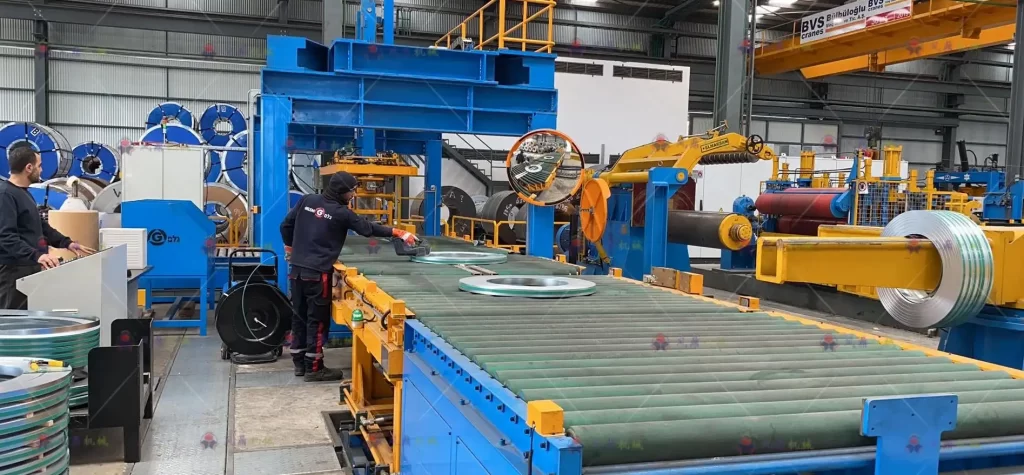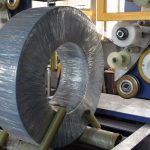Modern Packaging Solutions for the Steel Industry: The Advantages of Automation
- Modern Packaging Solutions for the Steel Industry: The Advantages of Automation
- 1. Understanding the Need for Automation in Steel Packaging
- 2. Key Advantages of Automation in Steel Packaging
- 3. Advanced Technologies in Steel Packaging Automation
- 4. Overcoming the Challenges of Automation
- 5. Case Studies: Successful Automation in Steel Packaging
- 6. The Future of Automation in Steel Packaging
- Conclusion

In the rapidly evolving world of steel manufacturing, automation has emerged as a game-changer in the realm of packaging solutions. The steel industry faces immense challenges when it comes to packaging large, heavy, and oddly-shaped products such as coils, sheets, or rods. Manual labor, while once the backbone of industrial operations, has limitations—especially when efficiency, precision, and safety are critical. This is where automated packaging systems step in, offering streamlined processes and a range of benefits that are transforming the industry.
This article explores how modern automated packaging solutions are revolutionizing the steel industry, focusing on the advantages they bring in terms of efficiency, cost-effectiveness, safety, and quality control. Whether you’re considering upgrading your packaging systems or curious about how automation can enhance your operations, this guide will provide the essential insights.
1. Understanding the Need for Automation in Steel Packaging
The steel industry is synonymous with large volumes and heavy loads, often requiring complex handling and packaging. Historically, packaging steel products involved numerous manual steps—lifting, wrapping, strapping, and securing the products for shipment. However, this approach had inherent challenges:
- Labor-intensive: Manual packaging requires significant manpower, leading to higher labor costs and potential for human error.
- Safety risks: Handling heavy steel products manually increases the risk of workplace injuries.
- Inconsistent results: Human involvement in repetitive tasks can lead to inconsistencies in packaging quality.
As the global demand for steel continues to rise, companies are seeking ways to scale their operations while maintaining high standards of efficiency and safety. Automated packaging solutions have become the go-to answer, offering an alternative that is not only faster but also more reliable.
2. Key Advantages of Automation in Steel Packaging
The transition to automated systems is not just about keeping up with the times; it’s about leveraging technology to create tangible benefits across operations. Here are some of the key advantages automation brings to steel packaging:
2.1 Improved Efficiency
One of the most significant benefits of automated packaging systems is the speed and consistency they provide. Machines do not tire or lose focus over time, meaning they can operate continuously without a drop in performance. This leads to:
- Faster packaging times: Automated systems can complete packaging tasks in a fraction of the time it takes manual workers.
- Increased throughput: More steel products can be packaged and prepared for shipment, helping companies meet increasing demands.
- Optimized labor allocation: With less need for manual intervention, workers can focus on higher-value tasks that require decision-making and oversight.
For example, an automated steel coil wrapping machine can handle large coils efficiently by using advanced sensors to ensure proper wrapping without human intervention. This speeds up the process while ensuring every package is securely wrapped to prevent damage during transport.
2.2 Enhanced Safety
Safety is a paramount concern in the steel industry. The manual handling of heavy steel components presents significant hazards, including lifting injuries, crush incidents, and repetitive strain. Automation significantly reduces these risks by:
- Eliminating manual handling: Automated machines take over dangerous tasks such as lifting, strapping, and wrapping, protecting workers from injury.
- Precision-based operations: Machines operate with precise control, reducing the risk of accidents caused by human error.
- Better ergonomics: Operators are no longer required to perform physically taxing tasks, which leads to fewer cases of work-related musculoskeletal disorders.
By integrating automated packaging solutions like coil upenders and pallet inverters, companies can ensure that even the heaviest and most cumbersome loads are handled safely and efficiently.
2.3 Cost-Effectiveness
While the initial investment in automated packaging solutions might seem steep, the long-term cost benefits make it a smart decision. Some of the areas where automation saves money include:
- Lower labor costs: Fewer workers are required to operate automated systems, and those who are needed can be tasked with more skilled roles.
- Reduced errors and product damage: With machines following set parameters and protocols, errors are minimized, and the risk of damaging valuable steel products is reduced.
- Energy efficiency: Many modern automated systems are designed to be energy efficient, reducing the overall cost of operations.
Additionally, automated systems are scalable, meaning they can easily adjust to increased production demands without the need for significant additional investment.
3. Advanced Technologies in Steel Packaging Automation
The automation of steel packaging has advanced significantly over recent years, with cutting-edge technologies taking center stage. Below are some of the most impactful technologies currently driving the shift toward automation in the industry:
3.1 Robotic Arms and Conveyors
Robotic arms have become a critical component in automated packaging solutions. Capable of precision lifting, stacking, and strapping, they can handle steel products of varying sizes and weights with ease. When integrated with conveyor systems, robotic arms can create an efficient workflow, moving products seamlessly through the different stages of packaging.
3.2 Automated Wrapping and Strapping Machines
Packaging steel products for shipment requires secure wrapping and strapping to prevent damage during transport. Automated wrapping machines can precisely wrap steel coils or sheets, ensuring the protection of the product. Similarly, strapping machines ensure that the packaging is securely fastened, preventing any shifting or loosening during transit.
3.3 IoT-Enabled Systems
The Internet of Things (IoT) is playing a transformative role in packaging automation by offering real-time data and monitoring capabilities. IoT-enabled packaging systems can track the condition of the machinery, optimize operations based on real-time data, and even predict maintenance needs to prevent breakdowns. This reduces downtime and ensures the packaging line is always running smoothly.
3.4 Vision-Based Quality Control Systems
Quality control is an essential aspect of steel packaging. Vision-based systems using AI and machine learning can inspect the packaging in real-time to ensure compliance with industry standards. These systems can detect issues such as improper strapping, loose wrapping, or damaged goods and notify operators for immediate rectification.

Get Your Best Solution !
4. Overcoming the Challenges of Automation
Despite the clear advantages, transitioning to automation does come with its challenges. Some companies face resistance from their workforce, who fear job displacement. However, the shift to automation often creates new opportunities in technical and supervisory roles, where workers can be trained to manage and maintain automated systems.
Additionally, the upfront costs of implementing automation can be high. However, as previously mentioned, the long-term cost savings, particularly in labor and energy efficiency, outweigh the initial investment.
5. Case Studies: Successful Automation in Steel Packaging
To highlight the effectiveness of automated packaging solutions, let’s look at a few case studies of companies that successfully implemented these systems:
Case Study 1: Steel Coil Manufacturer
A large-scale steel coil manufacturer in North America invested in an automated coil wrapping system. The results were impressive—packaging time was reduced by 40%, and workplace accidents related to coil handling decreased by 60%. Additionally, product damage during shipment was almost eliminated.
Case Study 2: Steel Sheet Distributor
A steel sheet distributor implemented automated strapping machines to secure their heavy loads. This resulted in faster shipping times and a significant reduction in labor costs. The distributor was able to reallocate workers to more critical roles within the company, boosting overall productivity.
6. The Future of Automation in Steel Packaging
Looking ahead, automation in steel packaging is poised to become even more sophisticated. Future advancements will likely focus on greater integration with artificial intelligence, allowing machines to not only perform tasks but also make decisions based on real-time data. AI-powered robotics will be able to self-adjust packaging processes to optimize speed and accuracy even further.
Moreover, sustainability will play an increasingly important role, with automation being tailored to minimize material waste and energy consumption, meeting both operational and environmental goals.
Conclusion
Automation in steel packaging is no longer a luxury but a necessity for companies looking to stay competitive in today’s fast-paced industrial landscape. The advantages are clear—improved efficiency, enhanced safety, and cost-effectiveness—and the future promises even more advancements in technology. By embracing automated packaging solutions, steel manufacturers and distributors can streamline their operations, protect their workers, and ultimately enhance their bottom line.
Investing in modern packaging solutions is not just about keeping up with industry trends; it’s about future-proofing your business for sustained success.

Get Your Best Solution !









